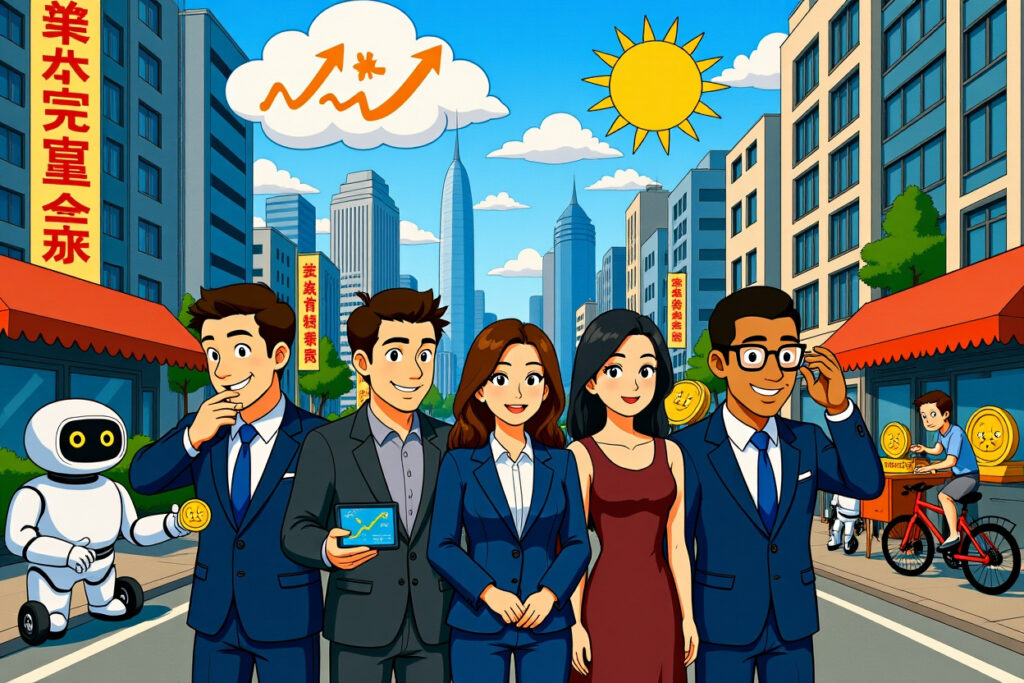The Growing Crisis of Unimplemented Agreements
When Donald Trump signed high-profile trade deals with America’s closest allies, they were heralded as diplomatic triumphs. Months later, these agreements remain largely unexecuted, transforming negotiated compromises into sources of international frustration. The UK, European Union, Japan, and South Korea now face mounting economic losses as critical tariff relief provisions stall in bureaucratic limbo. Industry leaders report dwindling orders, vanishing profits, and strategic paralysis while awaiting U.S. action on signed accords.
This pattern of unfulfilled trade agreements has created tangible economic consequences. Japanese automakers bleed $680,000 hourly, British steel exports wither under 25% tariffs, and Korean car shipments to America plummet. What was negotiated as mutual benefit now manifests as unilateral burden. As deadlines pass without implementation, diplomatic goodwill erodes alongside commercial confidence.
The core issue transcends politics: businesses require predictability to operate. When signed accords become unfulfilled trade agreements, supply chains falter, investments stall, and competitive positions weaken. The widening gap between promised relief and actual policy now threatens to redefine America’s economic relationships with its most important partners.
Summary of Key Impacts
- Japanese auto industry facing $680,000 hourly losses due to unresolved tariffs
- UK steel exports declining under 25% duties despite negotiated exemptions
- South Korean automotive exports to US down 17% amid implementation delays
- EU manufacturers absorbing billions in unexpected tariff costs
- Critical exemptions stalled by technical requirements like UK’s “melt and pour” rule
Japan’s Auto Industry: Economic Bleeding Continues
Japan’s chief trade negotiator Akira Azegami (赤泽亮正) delivered a stark assessment: “We’re still suffering damage—the bleeding hasn’t stopped.” Despite the July agreement reducing auto tariffs to 15%, the punitive 25% rate remains in place pending U.S. implementation. This bureaucratic limbo costs Japanese manufacturers approximately $680,000 every hour according to government calculations.
Nissan CEO Ivan Espinosa (伊万·埃斯皮诺萨) explained the operational paralysis: “Without clarity on when or how tariffs will be applied, forecasting becomes impossible.” The company initially projected a 450 billion yen ($3 billion) tariff impact, later revising to 300 billion yen ($2 billion) as negotiations progressed. Yet these unfulfilled trade agreements leave even revised estimates uncertain.
Azegami (赤泽亮正) made a special trip to Washington seeking tariff adjustments and refunds for overpaid duties. His unsuccessful mission underscores how these unfulfilled trade agreements create administrative burdens beyond direct financial impacts. Without timely resolution, Japan’s export-oriented manufacturing model faces structural threats.
The Ripple Effects Beyond Automakers
- Supplier networks: 78,000 small manufacturers face order reductions
- Employment: Major automakers freeze hiring despite production demands
- Investment delays: $2.1 billion in planned US factory expansions postponed
- Technology development: Electrification research budgets cut by 15-30% industry-wide
South Korea’s Costly Bargain
South Korea’s situation exemplifies how unfulfilled trade agreements undermine strategic partnerships. The July 31 agreement reduced general tariffs to 15% but left the critical 25% auto duty untouched. Bloomberg Intelligence analyst Joanna Chen (陈乔安娜) estimates Hyundai-Kia still faces $5 billion in potential tariff costs this year—equivalent to 37% of their 2023 net profit.
Trade data reveals the damage: first-half auto exports to America dropped 16.8% while steel shipments fell 11.4%. These declines occurred despite Seoul’s concession of $350 billion in shipbuilding investments and $100 billion in energy purchases. The upcoming August 25 summit between President Lee Jae-myung (李在明) and Trump now carries extraordinary weight.
Negotiators face complex linkage challenges. The unfulfilled trade agreement terms will be discussed alongside equally contentious issues including:
- $5 billion annual US troop hosting costs
- North Korea policy coordination
- Semiconductor technology transfers
- Electric vehicle battery sourcing requirements
This linkage risks turning commercial disputes into broader diplomatic friction. What began as sector-specific tariffs now threatens the foundation of the U.S.-Korea alliance.
Europe’s Mounting Costs
European Commission President Ursula von der Leyen (冯德莱恩) announced what Brussels believed was a comprehensive solution three weeks ago. The agreement supposedly reduced tariffs to 15% across sectors including automobiles. Reality proved different. German Automobile Industry Association President Hildegard Müller (希尔德加德·穆勒) stated bluntly: “The agreement hasn’t brought any clarity or improvement. The resulting costs already amount to billions of euros.”
Former EU Trade Commissioner Cecilia Malmström (塞西莉亚·马姆斯特罗姆) identifies ambiguous language as the core problem: “We’re likely to see permanent negotiations and extensive stalling tactics.” This lack of precision turns unfulfilled trade agreements into continuous negotiation processes rather than settled outcomes.
The pressure points are intensifying:
- German manufacturers report 23% profit erosion from tariff costs
- French luxury automakers face $12,000 per-vehicle duty penalties
- Italian industrial suppliers report 30% order cancellations from US clients
- Swedish electric vehicle specialists delay US market entry indefinitely
Malmström (塞西莉亚·马姆斯特罗姆) warns of political consequences: “The European Commission faces tremendous pressure, particularly from automotive manufacturers in Germany, Italy, France, and Sweden.” When unfulfilled trade agreements impact employment in key electoral districts, technical trade issues rapidly become political crises.
Britain’s Steel Stalemate
The UK secured uniquely favorable 10% reciprocal tariffs in its agreement—the lowest among U.S. trade partners. Yet the 25% steel tariff remains unresolved due to the “melt and pour” requirement mandating that exempted steel must undergo these processes within Britain. This provision excludes Tata Steel, the country’s largest producer, following their 2023 blast furnace closures.
Tata Steel Public Affairs Director Tim Rutter (蒂姆·拉特) explains: “It’s not that the UK government isn’t trying. We hear American departments are overwhelmed.” The company’s $1.7 billion electric arc furnace project won’t operationalize until late 2027, leaving the industry in limbo.
Britain’s proposed solution—allowing imported European semi-finished steel to be processed in UK facilities and qualify as British—faces bureaucratic hurdles. A Department for Business and Trade spokesperson confirmed ongoing efforts to resolve the issue, but U.S. Customs’ latest tariff bulletins suggest minimal progress. The consequences are tangible:
- UK Steel reports 60% of members experiencing US order declines
- Tata Steel postpones $350 million Welsh plant modernization
- Export volumes to America down 38% year-on-year
- 3,200 steelworker jobs at risk across Northern England
This specific technical requirement demonstrates how unfulfilled trade agreements often founder on implementation details rather than major policy disagreements.
Systemic Delays and Future Implications
Japan’s Azegami (赤泽亮正) notes that even when implementation occurs, the process takes approximately 54 days—meaning relief might not come until mid-September at best. London Flint Global partner Sam Lowe (萨姆·洛) observes: “This confirms negotiations never truly end.” The pattern suggests unfulfilled trade agreements may become standard features of economic diplomacy.
Three structural factors drive the implementation gap:
- Bureaucratic overload at U.S. trade agencies
- Complex verification requirements for exemptions
- Interagency coordination challenges within the U.S. government
- Last-minute political interventions altering agreed terms
The consequences extend beyond current disputes. Upcoming tariffs targeting $300 billion in pharmaceuticals, semiconductors, and renewable energy components will likely face similar implementation challenges. As Lowe (萨姆·洛) notes, the negotiation cycle appears perpetual rather than conclusive.
Business leaders are adjusting strategies accordingly:
- Japanese automakers accelerating production shifts to North America
- EU manufacturers establishing Turkish and Balkan transit hubs
- Korean steel producers investing in Mexican processing facilities
- UK exporters pursuing Asian markets to reduce U.S. dependence
The Path Forward
The economic damage from these unfulfilled trade agreements accumulates daily. Japan’s auto sector has lost approximately $2.4 billion since negotiations concluded. EU manufacturers report $6.1 billion in avoidable costs. Britain’s steel industry faces existential threats without resolution.
Three critical developments will shape outcomes:
- The August 25 US-South Korea summit addressing multiple friction points
- Early September U.S. administrative orders implementing Japanese terms
- Ongoing UK-EU consultations on steel certification protocols
Business leaders should immediately:
- Diversify export markets beyond the United States
- Restructure supply chains to minimize tariff exposure
- Leverage industry associations for coordinated advocacy
- Develop contingency plans for extended implementation delays
The resolution requires political will matching the initial deal-making enthusiasm. Until signed agreements translate to enforced policies, these unfulfilled trade agreements will continue damaging the economies they were designed to protect. The coming weeks will reveal whether diplomatic solutions can outpace mounting economic costs.




